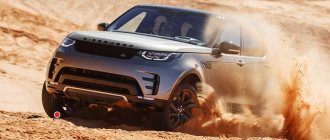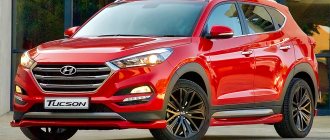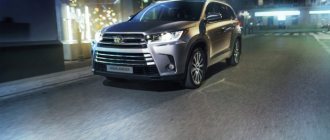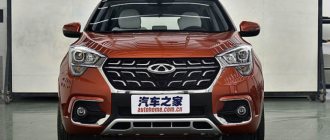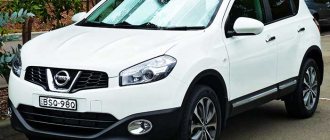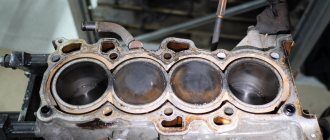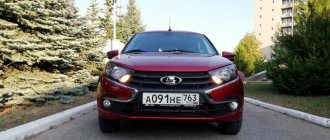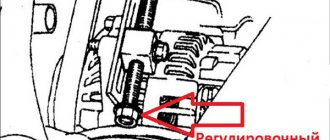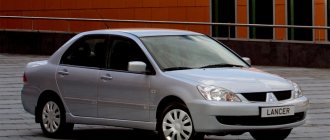Nissan Maxima
Nissan Maxima
Nissan Maxima
Maxima always found its buyer. She grew and developed together with an American stock market player, a Japanese businessman and a European top manager. In addition to reliability and technical innovations, the business class sedan was attractive due to its moderate price, which was lower than that of its classmates. Only relatively recently in Japan and Europe he handed over the honorary title of flagship to Nissan-Teana. In the USA, the car was so liked that here it is still sold in the same form as in the title photo. The solidity of appearance emphasizes the extraordinary status of the owner. All generations of the car were like this.
WE RECEIVED THE WARMTH
Maxima set out on the path of widespread and uninterrupted recognition back in 1981 - then Nissan offered buyers in the United States the rear-wheel drive Bluebird model in the most complete configuration for those times. The second generation debuted in 1984; it was already a front-wheel drive car with a changed body and interior trim. Overseas, it was nicknamed the “floater”: when the US authorities imposed restrictions on the import of cars, it used cunning schemes to circumvent duties, and ferries with Maxims roamed to different ports before the cars reached America.
Exterior
The 2020-2021 Nissan Maxima is undeniably beautiful, with strong character lines, a floating roof design and large LED headlights that shine quite brightly, even if the IIHS doesn't think so. Nissan's V-shaped grille appears larger and bolder than ever on the Maxima. The SR version, with black 19-inch wheels and the same trim, looks truly sporty.
Nissan Maxima
Differences from the “European” A33B body, intended for the American market: uniquely shaped bumpers and lights, a different radiator grille design, and a standard rear wing.
Differences from the “European” A33B body, intended for the American market: uniquely shaped bumpers and lights, a different radiator grille design, and a standard rear wing.
In the States they sold both a sedan and a station wagon. But in 1988, another option appeared, the third in a row (body index - J30), and the station wagon left the North American market.
In Japan, they bought a model with both the J30 body familiar to Americans and Europeans, and with the original A31, called the Nissan Cefiro. It was a rear-wheel drive sports sedan - a relative of the iconic Skyline. Of course, more civil. It was seen as the successor to a business class car, which the J30 was rightly considered to be. The basic equipment of the Cefiro includes climate control, power steering, limited slip differential, electric seats, etc.
Body and interior
The Nissan Maxima A32 is in many ways superior to its famous German competitors. Although the interior design is devoid of frills, the upholstery skillfully hides the huge mileage of older specimens.
The equipment gives no reason to complain. Air conditioning is included in the list of mandatory equipment. In addition, many copies have electric and heated seats, leather interior and cruise control. Owners respond positively to the standard six-speaker Bose audio system. While driving, the cabin is very quiet, although the hum of the tires is a little disturbing.
In 1998, the interior underwent a slight update. The steering wheel and indicators have changed. Richer versions added wood trim and climate control.
The front panel looks modest, despite the wooden inserts. At least nothing peels or creaks.
American versions are easy to distinguish from European ones by the rear: bumper, lights, trunk lid with the Maxima inscription. The front hood and bumper are different. Despite the different turn indicators, American and European optics are completely interchangeable.
Nissan saved some money on the trunk. This is not about the container, but about the fact that it can only be opened from the outside. And instead of installing telescopic hinges (as in more expensive cars), the usual massive ones are installed here, eating up part of the internal space. It is also surprising that in such a luxurious car the hinges soon begin to creak.
Nissan Maxima
“Infinity-I35” is practically a copy of the European “Maxima” in the back of an A33.
“Infinity-I35” is practically a copy of the European “Maxima” in the back of an A33.
In the Old World, the Maxima was sold only with a 3-liter V6 (the engine received the VG30E index) with a power of 170 hp. And in the USA, a 24-valve engine (VG30DE) of the same volume was also available; it developed 195 hp. Both turned out to be very reliable and high-tech for their time. For example, they combined an ECCS injection distribution system, a timing belt drive and hydraulic compensators in the valve drive. The engines were paired with a 5-speed manual transmission or a 4-speed automatic transmission.
Nissan Maxima
Since 2004, the most powerful 3.5-liter V6 in the line, with a capacity of 268 hp, has been installed under the hoods of the American Infiniti I35 and Nissan Maxima.
Since 2004, the most powerful 3.5-liter V6 in the line, with a capacity of 268 hp, has been installed under the hoods of the American Infiniti I35 and Nissan Maxima.
The model was received very warmly in the world's main markets. Seeing this, the engineers decided not to stop there.
BIG LIFE
And then, in the second half of 1994, the Maxima with the A32 body appeared and was assigned the QX index. Cars for European countries received transverse V-shaped “sixes”: a 2-liter VQ20DE with a power of 140 hp. and a 3-liter 193-horsepower VQ30DE. Both worked in tandem with mechanics or hydromechanical automatic transmission. Japanese buyers received the same thing, but hotter: on right-hand drive Cefiros, these engines produced 155 and 220 hp. There was another engine - a 2.5-liter VQ25DE, which developed 190 hp.
Comparison with competitors
In 2021, the Japanese Nissan Maxima VIII sedan competes with strong cars. Competitors of the Nissan Maxima A36 are Hyundai Genesis, Toyota Camry, Mazda 6, BMW 3, Audi A4, Volkswagen Phaeton, Cadillac XTS, Lexus ES, Renault Talisman, Honda Accord.
Nissan Maxima
In 2004, another surprise was presented to buyers in the USA: the body was updated again.
“Shtatnik” began to differ radically from “European” and “Japanese”. In 2004, another surprise was presented to buyers in the USA: the body was updated again. “Shtatnik” began to differ radically from “European” and “Japanese”.
Interestingly, the car was equipped with almost the same suspension as the more affordable Almera and Primera. The front wheels are on shock-absorbing struts, the rear wheels have a semi-independent type multi-link on trailing arms, and a torsion bar type transverse beam is attached to the body by a lever system operating on the principle of the Scott-Russell mechanism.
Nissan Maxima
Cars heading to the countries of the Middle East shone with an abundance of chrome.
Cars heading to the countries of the Middle East shone with an abundance of chrome.
In Russia, Maxima began to be sold in 1996. It was identical to its European counterpart. In Japan, since 1997, the Cefiro was offered as a station wagon, but it bypassed Europe and our country.
For the USA, the main market, the designers proposed the A32B body. It was distinguished from the “European” by the rear wing, a different shape of the radiator grille and bumpers. Having quickly become popular, it pushed Nissan management to sell the European body to Americans as well. This is how the I30 model appeared under the Infinity brand. Already in the basic configuration it was offered with a full range of options (in Europe they came only for an additional fee), a 3-liter engine and an automatic transmission. In appearance, again, little has changed - the radiator grille, bumpers, and the Nissan nameplates have been replaced with Infiniti emblems.
Infiniti's position in the United States is traditionally strong, and the new product also did not go unnoticed. However, the stable demand for the model this time did not lull the developers of the manufacturing company.
GOLDEN YEARS
In 2000, the next generation of the “Japanese” debuted at the Geneva Motor Show - with the A33 body. Its rigidity has increased by 30%, the wheelbase has been lengthened from 2700 to 2750 mm, and the length has been increased from 4770 to 4920 mm. It’s clear, and the interior has become more spacious. Having tinkered with the rear suspension, engineers have improved ride quality and driving comfort. The engines have also changed. But if the “junior” power remained the same (140 “horses”), then the 3-liter one added 200 hp. instead of the previous 193 hp. There were two trim levels to choose from: SLX and SE. Standard equipment includes front and side airbags, satellite navigation, xenon and more.
Prices and options
The 2021 Maximums are sold in S, SV, SL, SR and Platinum variants:
- The $35,145 Maxima S trim comes with standard active safety features, an 8-inch touchscreen infotainment system with Bluetooth connectivity and Apple CarPlay and Android Auto functionality, 18-inch alloy wheels, power-adjustable front seats and two USB ports.
- The sporty SR costs more than $42,345 and comes with a panoramic roof, superior sound system and leather upholstery, as well as a firmer sport suspension with better anti-roll bars, more responsive brakes, blacked-out trim and 19-inch alloy wheels.
- Maxima SV and SL trims add more luxury touches such as leather seats and satellite navigation.
- The $42,435 Platinum trim has the most features, including an advanced Bose audio system, a panoramic dual-pane roof, a 360-degree camera system, 19-inch wheels, heated and cooled leather front seats, real wood trim and more.
The Sedan comes with a 36-month/60,000-kilometre limited warranty and a 5-year/100,000-kilometre powertrain warranty.
Nissan Maxima
This car was recognized in Europe and Russia. The Americans got an exclusive: the body of the A33B was different from what was sold in other countries. Buyers in the USA and Canada saw the updated car, again under the Infiniti brand. The I30 model with a 3-liter engine boosted to 230 hp cost only $29,000. Variable-capacity mufflers similar to those installed on the Nissan Skyline GT-R were used in the design of the exhaust system, and a 200-watt stereo system with a CD changer made by Bose was added to the rich basic configuration. The most powerful was the I35, which, judging by the index, was equipped with a 3.5-liter engine.
Nissan Maxima
What about in Europe? Without waiting for the same popularity as overseas, at the beginning of 2005 the car was once again refreshed. But only cosmetically: the radiator grille became slightly different, the CD changer was moved from the trunk to the center panel, and the seat adjustments now have memory. The version with a 3-liter engine received cruise control. In the summer of that year, the updated model arrived in Russia.
Officials sold the restyled car until mid-2006. After that, Maxima was removed from the Nissan model range in our country - it was replaced by Teana. But in the USA and Canada the car is still sold.
Interior
The interior is draped in high-quality materials, at least on higher trims. At the same time, all trim levels received some sporty accent, for example, a flat-bottomed steering wheel. The center stack faces the driver and has plenty of physical knobs and buttons, as opposed to anything on a touchscreen that requires focusing, which can distract the driver while driving from the road.
Comfortable front seats make up for the less-than-comfortable and spacious rear seat space. The base cloth seats are two-way adjustable, have good lateral support, and remain comfortable for long hours behind the wheel. Higher-spec models received higher quality materials, such as genuine leather and synthetic suede.
The rear will only be comfortable for two adults, who have only 86 centimeters of legroom, while headroom is somewhat hampered by the sloping roofline. The smaller Nissan Altima has more comfortable seats in the back. The trunk of the sedan also does not shine with a record volume, it is only 400 liters.
Nissan Maxima
Salons of the “Americans” - “Infiniti-I35” (left) and “Maxima” (right).
The luxury brand was offered only with an automatic transmission, while the more affordable “just” Nissans were also offered with a manual transmission. To satisfy the “sporty” ambitions of buyers, they made white instrument scales and installed perforated pedal pads. Salons of the “Americans” - “Infiniti-I35” (left) and “Maxima” (right). The luxury brand was offered only with an automatic transmission, while the more affordable “just” Nissans were also offered with a manual transmission. To satisfy the “sporty” ambitions of buyers, they made white instrument scales and installed perforated pedal pads.
Summary
The 2020-2021 Nissan Maxima is stylish and has a great engine that is a winner if you add an 8-speed automatic transmission. Finishing is high, safety technology is advanced, and for those who can't do without being looked at on the road, the 2021 Maxima is a great choice.
( 1 votes, average: 5.00 out of 5)
Nissan Maxima
OUR HELP
The basic package (restyled version, which appeared in 2005) with a 2.0 liter engine and manual transmission includes four airbags, ABS, EBD, Nissan Brake Assist, immobilizer, central locking with remote control, full-size spare wheel, on-board computer, climate control. control, audio system with CD changer, six speakers, power steering, four power windows, heated front seats, driver's seat with lumbar support and height adjustment, audio system and on-board computer control keys on the steering wheel, leather-trimmed steering wheel and gearshift knob, unlocking the trunk and gas filler flap from the interior, folding rear seat in a ratio of 60:40.
Nissan Maxima
| Region | Engine | KP | Peculiarities | Approximate prices, rub. |
| Europe (2005–2006) | 2.0 V6, 140 hp. 3.0 V6, 200 hp. | M5/A4M5/A4 | was distinguished by slight restyling; after 2005, a new radiator grille appeared on the car, the emblem on the trunk lid became smaller, cars with a 3-liter engine received cruise control | “Maxima” after 2005 can be purchased for 500–800 thousand rubles; |
| North America (2004–2008) | 3.0 V6, 230 hp. 3.5 V6, 268 hp. | A4M6/A4/A5 | the cars were sold under the Nissan and Infiniti brands; since 2004, the Nissan Maxima is fundamentally different from the European and Japanese versions; the latest generation of the model is still sold to this day | in the USA the price of the latest generation model is from $30,450 |
| Japan (1998–2003) | 2.0 V6, 160 hp. 2.5 V6, 210 hp. | M5/A4A4 | the model is known as the “Nissan-Cefiro”, along with the sedan it was also sold in a station wagon, with more powerful engines installed | pre-restyling cars cost from 300 to 700 thousand rubles; |
| 3.0 V6, 230 hp. 3.5 V6, 268 hp. |
Nissan Maxima: Citizen of the World
VII generation A35 (2008-2014)
The next 7th family of Nissan Maxima A35 has moved even further from the initial concept of the model towards the business class. We need to figure out how this model differs from the previous generation.
Appearance of the A35
The appearance immediately hints at the manufacturing company. It is equipped with many of the same features found in other Nissan vehicles. At the same time, separate unique solutions have emerged. The main distinctive feature of the car in the head optics is its elongated shape, divided on the side by a predatory squint.
The headlights have xenon filling inside. The rectangular radiator grille, made of chrome, looks strict. Her appearance changed in 2011. The bumper received beautiful solutions - air intakes near the compact fog lights.
Interestingly, the design style is consistent with the Liquid Motion concept used on the Nissan GT-R.
The side part turned out to be simple. It has its own massive, bloated severity. The chrome trim on the windows and the chrome on the door handles are noticeable, because Americans love such elements. By default, the wheels are 18 inches diagonal, but more expensive versions have 19-inch wheels. The ground clearance was 140 millimeters.
The rear part is similar to the Infinity M and other cars of the Japanese company. This can be seen from the identical lights and the large raised luggage compartment lid. Top versions are equipped with a large spoiler. The large bumper received only protrusions for two pipes of the exhaust system.
Salon A35
The interior is also similar to the Infinity. Although many people speak negatively about the old-fashioned interior styling of the 7th generation Nissan Maxima, it is precisely this that imparts rigor, which increases self-esteem when driving a sedan. The quality of finishing materials is excellent. The interior boasts thick leather, soft plastic, and wooden inserts.
In front of the driver is a three-spoke “steering wheel”, which is adjustable in height and reach. The “tidy” has three round sections with analog sensors. The right side is occupied by fuel level sensors, engine temperature sensors and a compact information display. The center console has a 7-inch multimedia screen that also supports navigation.
You can control it using a scattering of keys. Below is the climate system block. The interior is decorated with wooden elements that hide compartments for small items and cup holders. The Nissan Maxima A35 has a lot of free space. For the passengers sitting in front, the Japanese have provided excellent leather seats that are electrically adjustable in 8 directions and have a heating function.
There is light lateral support to support the body, but nothing more. There is room for 3 people on the second row, but only two people will be more comfortable. The rear row has a 2-section panorama (top equipment). The luggage compartment has become much smaller - only 402 liters.
Technical characteristics of the A35
The engine compartment is equipped with a modified petrol V-shaped 6-cylinder engine with a displacement of 3.5 liters. As a result, it generates 290 horsepower (348 Nm). Although in 2010 the Japanese wanted to install a diesel power plant, in reality this did not happen. The Xtronic CVT continuously variable transmission works together with the engine. All torque is transmitted only to the front wheels. This is where the car differs from the Infinity - it was built on the Nissan-D platform.
Already in 5.8 seconds the sedan accelerates to the first hundred. However, due to such dynamics, fuel consumption suffers - 19 liters per 100 km. The suspension is exactly the same as on the previous generation. There are anti-roll bars on both axles. The sedan has a low center of gravity, which has a positive effect on handling.

